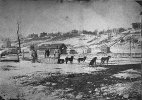windar
Teller of Tales
Epilogue:
Mr. James J Moore
462 Summit Avenue
St. Paul, Minnesota
November 29, 1893.
Dear Father:
I hope you are well, despite all that has happened in the past year and a half. I think moving back to Minnesota was a wise choice, even if it’s St. Paul rather than Duluth. Neither you nor I really belonged in New York high society and trying to fit in brought out the worst in both of us, I am afraid.
I must confess that I spent much of the time since I last saw you being very angry with you for having sent me to that horrible place. Believe me, everything that the newspapers said about it was true, and worse. It was a very good thing that the state medical board responded to the complaints that were made and shut the place down.
But, in thinking about it, I have come to realize that you sent me there, however misguidedly, because you loved me and wanted a good life for life for me according to your idea of what that was. You were certainly not the only parent who was fooled by Dr. Darwin. The parents of all the other girls who were there with me and those that had been there before were all taken in as well. Too bad that Darwin somehow managed to sneak out of the country. The man ought to be in jail.
The truth is that his treatment doesn’t work. In fact, if it had ever worked, that would be a tragedy. Sexual desire is natural and beautiful, not a thing to be avoided or suppressed. When people love each other, like Stan and I do, they want to express that love with their bodies as well as their minds. To not desire that would be a terrible shame and I am thankful every day that I want Stan as much as he wants me and we can provide so much joy to each other.
Father, I know you wanted me to pick Archibald Vandergrift rather than Stan Goldman. And to tell you the truth, I was torn. Archie was and is a decent man and I did like him very much. We recently got a letter from him. He married Hazel Baumann, the girl with whom I escaped from the Darwin Institute, and they are living happily in Pittsburgh. I am so glad for both of them. They deserve one another.
But, as hard as it might be for you to understand, I didn’t ache for him the way I did and do for Stan. Surely, you must know that I took so many risks and broke so many of your rules because I wanted Stan more than anything in the world. In the end, I went with my heart.
And I am not sorry that I did. I truly believe that if you got to know Stan, you would like him. Despite the differences in your backgrounds, I think you would find that you have a lot in common.
Anyway, as you can tell from the postmark, we are living in California, Los Angeles, or as people here call it, LA, to be precise. How we got here is a long story. We left New York in a hurry, as you know. I wanted to say goodbye to you, but I was deathly afraid that you would send me back to that awful Institute.
So, we hopped on the train and headed west, all the way to California. First, we stayed in San Francisco for a while. Stan got a job in accounting with Levi Strauss-you know the company that makes blue jeans, like some of the lumberjacks and miners who worked for you wore. They’re Jewish, like Stan and liked his experience on Wall Street. Mr. Levi told Stan that he believes one day everybody will wear jeans, not just miners and lumberjacks. That seems a bit crazy to me, but who knows, right?
It was at that time that Stan began to believe that the economy and the stock market were headed for a fall. We had noticed that the train heading west was almost empty and we talked to some of the porters and stewards about that. They felt that too many railroads had been built after the Civil War and knew that many of them were losing money and kept afloat by borrowing.
So, Stan wrote back to his old friends and colleagues on Wall Street, discussing some ideas with them. They were skeptical at first, but he and I convinced them and they took short positions in a number of railroad stocks and some other equities as well. Yes, you read that right; Stan discussed the whole market situation with me and it turns out that your daughter inherited some of your business smarts. I caught on right away and encouraged him and even added some ideas of my own. Imagine that- gambler Stan Goldman needing me to push him to take risks!
Then, as you well know, in February, the Philadelphia and Reading Railroad went under and in May, the Panic struck and the whole market tumbled and kept going down. Stan and his friends made quite a bit of money from their short positions when they finally closed them out.
I know, Father, that you lost money in that Panic and lost more when the prices of iron ore and timber fell. I feel awful about that, truly, and about all the men who are out of work because of it. At least you had enough to buy a nice house in St. Paul, with a prestigious address as you sought to do so earnestly for us in New York and hopefully, things will come back eventually. Good business sense, which you have always had in abundance, will always prevail.
After that, Stan quit his job and we decided to move down here to Los Angeles. San Francisco was cold and foggy and it’s much warmer and sunnier here. We bought some land northwest of the city in the area that the locals call Hollywood. There are hills and trees and we have horses!
I have taught Stan to ride. All that time he spent around horses at the race track and he’d never ridden one until recently. But he’s not bad. Some of the ranch hands around here, whose families came up from Mexico many years ago call him “El Vaquero Judio”, the Jewish cowboy.
We’re looking to buy more land around here. It’s so lovely and the weather is so nice almost all the time, we’re quite certain that people from all over are going to move here and that the land will appreciate in value.
For one, I heard from Kristina. You remember her, the Swedish maid at the Plaza. She was very helpful and kind to me, so much so that she and I became close during those long lonely weeks at the Plaza, and I’ve stayed in touch with her even though you had her fired. She has married Mario, the desk clerk at the Plaza. I strongly advised against her doing that, as he is a very shady character, but she ignored my advice and fell in love with him. And they are happy together, like Stan and me. Love conquers all you see. Anyway, they are thinking of moving out here. Mario wants to open an Italian restaurant and he feels there are already too many of those in New York. I’ll bet his restaurant would be a good business investment for someone.
Father, I’ve saved the most important news for last, so I hope you are still reading. Two weeks ago, I gave birth to a beautiful baby boy! So, you are a grandfather now! His name is Samuel Goldman, after Stan’s paternal grandfather, who stayed behind in the old country and has since passed away without ever having met Stan.
We would love to have you come out and meet him. There is also the matter that Stan and I would love to be able to get married so that little Sam can be fully legitimate. As you know, being only nineteen, I am unable to marry without your permission. Of course, I can wait another year and a bit until I am twenty one and can do so on my own, or you can give your permission in a letter (our address is on the envelope), but think how nice it would be if you would come out here and we can do a real family wedding, maybe even with Stan’s parents from Ohio.
Please, I miss you very much and hope that you will accept our invitation. Little Samuel looks very much like you and you will adore him, I promise. Until then, I am your loving daughter,
Barbara…
Mr. James J Moore
462 Summit Avenue
St. Paul, Minnesota
November 29, 1893.
Dear Father:
I hope you are well, despite all that has happened in the past year and a half. I think moving back to Minnesota was a wise choice, even if it’s St. Paul rather than Duluth. Neither you nor I really belonged in New York high society and trying to fit in brought out the worst in both of us, I am afraid.
I must confess that I spent much of the time since I last saw you being very angry with you for having sent me to that horrible place. Believe me, everything that the newspapers said about it was true, and worse. It was a very good thing that the state medical board responded to the complaints that were made and shut the place down.
But, in thinking about it, I have come to realize that you sent me there, however misguidedly, because you loved me and wanted a good life for life for me according to your idea of what that was. You were certainly not the only parent who was fooled by Dr. Darwin. The parents of all the other girls who were there with me and those that had been there before were all taken in as well. Too bad that Darwin somehow managed to sneak out of the country. The man ought to be in jail.
The truth is that his treatment doesn’t work. In fact, if it had ever worked, that would be a tragedy. Sexual desire is natural and beautiful, not a thing to be avoided or suppressed. When people love each other, like Stan and I do, they want to express that love with their bodies as well as their minds. To not desire that would be a terrible shame and I am thankful every day that I want Stan as much as he wants me and we can provide so much joy to each other.
Father, I know you wanted me to pick Archibald Vandergrift rather than Stan Goldman. And to tell you the truth, I was torn. Archie was and is a decent man and I did like him very much. We recently got a letter from him. He married Hazel Baumann, the girl with whom I escaped from the Darwin Institute, and they are living happily in Pittsburgh. I am so glad for both of them. They deserve one another.
But, as hard as it might be for you to understand, I didn’t ache for him the way I did and do for Stan. Surely, you must know that I took so many risks and broke so many of your rules because I wanted Stan more than anything in the world. In the end, I went with my heart.
And I am not sorry that I did. I truly believe that if you got to know Stan, you would like him. Despite the differences in your backgrounds, I think you would find that you have a lot in common.
Anyway, as you can tell from the postmark, we are living in California, Los Angeles, or as people here call it, LA, to be precise. How we got here is a long story. We left New York in a hurry, as you know. I wanted to say goodbye to you, but I was deathly afraid that you would send me back to that awful Institute.
So, we hopped on the train and headed west, all the way to California. First, we stayed in San Francisco for a while. Stan got a job in accounting with Levi Strauss-you know the company that makes blue jeans, like some of the lumberjacks and miners who worked for you wore. They’re Jewish, like Stan and liked his experience on Wall Street. Mr. Levi told Stan that he believes one day everybody will wear jeans, not just miners and lumberjacks. That seems a bit crazy to me, but who knows, right?
It was at that time that Stan began to believe that the economy and the stock market were headed for a fall. We had noticed that the train heading west was almost empty and we talked to some of the porters and stewards about that. They felt that too many railroads had been built after the Civil War and knew that many of them were losing money and kept afloat by borrowing.
So, Stan wrote back to his old friends and colleagues on Wall Street, discussing some ideas with them. They were skeptical at first, but he and I convinced them and they took short positions in a number of railroad stocks and some other equities as well. Yes, you read that right; Stan discussed the whole market situation with me and it turns out that your daughter inherited some of your business smarts. I caught on right away and encouraged him and even added some ideas of my own. Imagine that- gambler Stan Goldman needing me to push him to take risks!
Then, as you well know, in February, the Philadelphia and Reading Railroad went under and in May, the Panic struck and the whole market tumbled and kept going down. Stan and his friends made quite a bit of money from their short positions when they finally closed them out.
I know, Father, that you lost money in that Panic and lost more when the prices of iron ore and timber fell. I feel awful about that, truly, and about all the men who are out of work because of it. At least you had enough to buy a nice house in St. Paul, with a prestigious address as you sought to do so earnestly for us in New York and hopefully, things will come back eventually. Good business sense, which you have always had in abundance, will always prevail.
After that, Stan quit his job and we decided to move down here to Los Angeles. San Francisco was cold and foggy and it’s much warmer and sunnier here. We bought some land northwest of the city in the area that the locals call Hollywood. There are hills and trees and we have horses!
I have taught Stan to ride. All that time he spent around horses at the race track and he’d never ridden one until recently. But he’s not bad. Some of the ranch hands around here, whose families came up from Mexico many years ago call him “El Vaquero Judio”, the Jewish cowboy.
We’re looking to buy more land around here. It’s so lovely and the weather is so nice almost all the time, we’re quite certain that people from all over are going to move here and that the land will appreciate in value.
For one, I heard from Kristina. You remember her, the Swedish maid at the Plaza. She was very helpful and kind to me, so much so that she and I became close during those long lonely weeks at the Plaza, and I’ve stayed in touch with her even though you had her fired. She has married Mario, the desk clerk at the Plaza. I strongly advised against her doing that, as he is a very shady character, but she ignored my advice and fell in love with him. And they are happy together, like Stan and me. Love conquers all you see. Anyway, they are thinking of moving out here. Mario wants to open an Italian restaurant and he feels there are already too many of those in New York. I’ll bet his restaurant would be a good business investment for someone.
Father, I’ve saved the most important news for last, so I hope you are still reading. Two weeks ago, I gave birth to a beautiful baby boy! So, you are a grandfather now! His name is Samuel Goldman, after Stan’s paternal grandfather, who stayed behind in the old country and has since passed away without ever having met Stan.
We would love to have you come out and meet him. There is also the matter that Stan and I would love to be able to get married so that little Sam can be fully legitimate. As you know, being only nineteen, I am unable to marry without your permission. Of course, I can wait another year and a bit until I am twenty one and can do so on my own, or you can give your permission in a letter (our address is on the envelope), but think how nice it would be if you would come out here and we can do a real family wedding, maybe even with Stan’s parents from Ohio.
Please, I miss you very much and hope that you will accept our invitation. Little Samuel looks very much like you and you will adore him, I promise. Until then, I am your loving daughter,
Barbara…
THE END






 …. $$$$$$$
…. $$$$$$$


